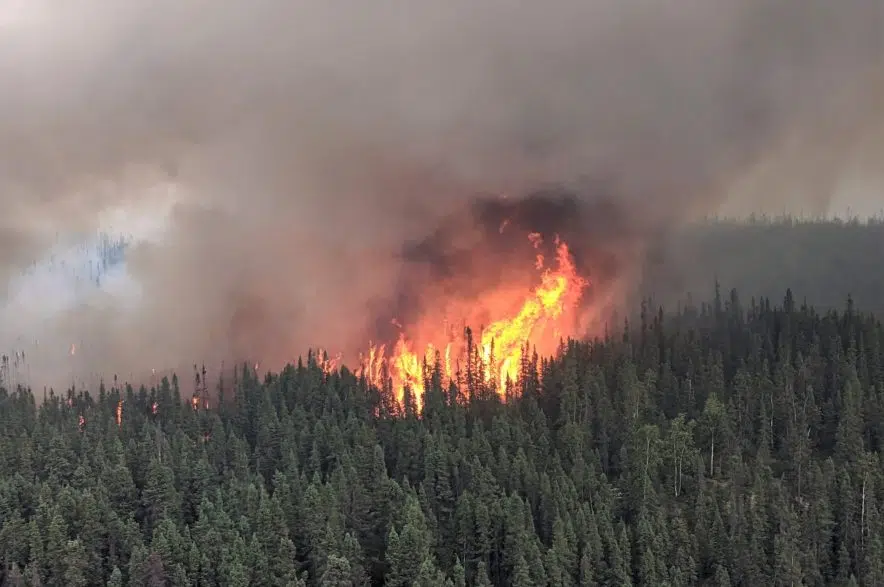An unprecedented wildfire season in Saskatchewan is continuing to create serious health concerns.
The major issue with all the wildfire smoke in the air is the effects it could have on people’s lungs.
“The wildfire smoke doesn’t necessarily cause an infection,” said Jaimie Peters, a registered nurse and certified respiratory educator with Lung Saskatchewan. “It can cause inflammation in your body. It can make those heart and lung diseases worse.
“When you’re exposed to something causing a lot of inflammation in your body, there may be that risk in developing chronic diseases.”
Environment Canada issued special air quality statements for much of Saskatchewan on Tuesday, with wildfires continuing to burn across the province.
Environment Canada meteorologist Sara Hoffman said air quality values of between four and six are when people with pre-existing health conditions might see their symptoms exacerbated.
“That is an individual case-by-case basis that folks will need to monitor themselves and their time outside (under the poor) air quality,” Hoffman said during a nationwide conference call.
“An Air Quality Health Index value of seven or greater is dangerous air quality for everyone and everyone should monitor their time outside.”
Special air quality statements are issued when the AQHI is seven or higher. Peters said people should use an air cleaner in their home while taking as many precautions as possible both inside and out.
“The particles in smoke are quite a bit smaller and a mask doesn’t always protect you from those smaller particles,” Peters said. “You could get a little bit of help from a N95 mask but it would really need to fit properly.”
Hoffman said forecasting smoke is difficult, even though the weather service is getting more and more practice at it. She noted that forecasting smoke days in advance is significantly less reliable than more immediate forecasts.
“The further out you go, often the less accurate it will be just because of the nature of forecasting smoke,” she said. “It’s almost like trying to catch smoke — it’s impossible to do.”
Hoffman said rain is coming for Western Canada, which could help those fighting the fires in northern Saskatchewan. However, lightning strikes also have the potential to start wildfires.
The Saskatchewan Public Safety Agency says there have been 215 wildfires so far this year, well above the five-year average of 145 for this time of year.
“As our climate continues to change with warming, we will expect to see a longer wildfire season, a more intense wildfire season with fuels (grass, boreal forests and so on drying out due to increased temperatures) and an increased frequency of lightning,” Hoffman said.
“In terms of exactly how much more frequent, we don’t have a number there, but what we can say is that the wildfire seasons will become more intense and more intense more frequently.
“There will be more years like this one repeating in the future.”
— With files from 980 CJME’s Daniel Reech







